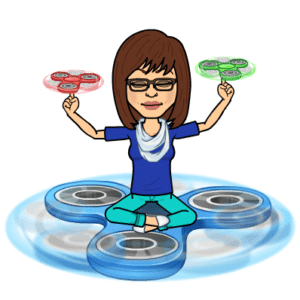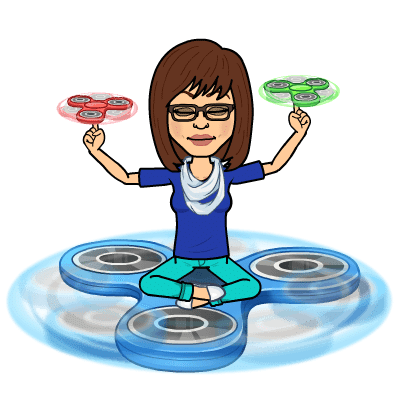I was a high school teacher during the mini-skateboard (they were officially called “Fingerboards”) craze of the early 2000’s. At the time, I worked with students who had trouble with self-control, focusing, and getting their work done. The day that a mini-skateboard flipped off a desk and hit another student in the face was the last straw for me. I needed a solution and I needed it fast.
After years of teaching, I knew that simply taking the mini-skateboard away would do very little good because that same student would find something else to fidget with a few minutes later. If they weren’t flipping a mini-skateboard they would be flipping a pencil, or a ruler, or poking the student in front of them with a pencil.
I had attended a conference the week before and did what most teachers do in the exhibit hall; I got myself a tote bag then went around to all the tables and filled my bag with as many freebies as I could snag. In my tote bag, I managed to collect some squishy balls and rubber bendables, wiki sticks and some other things that would be great to focus fidgeters. At that time, there was minimal research available to validate that focus tools were a great idea. However, I had witnessed the positive effects that the right focus tools could have on those students who needed them.
I ran what I call the win-win classroom based on the work of William Glasser.
During the first two days of school, I ran my students through an exercise called the win-win classroom. The essential point was to help them understand that when students behaved appropriately in the classroom, we all won. But rather than tell the students what the rules were, we brainstormed the rules together. This meant that students had ownership of the class rules from the first week of school. This class culture allowed me the framework to pull the class together and discuss how mini-skateboards, and the distraction they created, broke the rules we had agreed upon in the classroom.
We agreed that to be a win-win classroom, students who needed focus tools to concentrate and work well in the classroom would be allowed tools for that purpose. We also agreed that the tools we were using were not toys and needed to be “teacher approved” focus tools. We also agreed on rules for how these focus tools would be used.
Here’s what I told the students when they were inappropriately using a focus tool:
“My job is to teach. I cannot do my job when there is a distraction in the room that is preventing you or other students from learning. Your job is to learn. You cannot do your job if the focus tool you are using is hindering your learning. We need a win-win solution. That means, if a tool is not working for you and helping you focus and learn, we need to use a different tool.”

Teaching Strategies: What to do about spinners
I didn’t make it a punishment. I didn’t take away a focus tool without an explanation. And I offered the student the opportunity to come up with an alternative that would respect the class rules that everyone agreed upon and still support that student’s learning.
Examples of focus tools can be found in several of my articles that you can find here.
So, what has this got to do with the current spinner craze? Use the same technique. If spinners are to be used, there needs to be a rule in place, preferably agreed upon by students and the teacher, that create a win-win learning environment. It may also be necessary to teach students appropriate use of a spinner, just like any other focus tool. For example, flipping a focus tool in the air or throwing it would be inappropriate. Although that may seem obvious to a teacher, it may not be obvious to your students.
If the rules are broken, then the student is reminded that the teacher’s job is to teach and the students’ job is to learn and, unfortunately, the spinner is preventing both the teacher and the student from doing their jobs. Consequently, the spinner must be put away and the student may choose a teacher-approved focus tool.
I would give a student two chances to make a good choice on how they use the spinner. I would say, “The rule is respect. Using the spinner in a distracting way is disrespectful. Can you make a better choice and use the tool with respect to the rules we’ve agreed upon?” If the student responds with yes, I’d walk away and move on. If the student responds negatively, they will have to choose an alternative to the spinner. Sometimes, I might give a student one more chance, if appropriate. However, three times and they’re out. At that point, the student must put the spinner away.
This option eliminates issues raised by parents who feel their child needs a focus tool. You are not taking away the opportunity for the student to focus using a fidget item. Rather, you are providing an alternative that respects the agreed-upon rules of a win-win classroom.
Another really good read (with links to research on the efficacy of using focus tools) that you might enjoy on this topic is Five reasons to ban fidget spinners from every classroom in America.
To browse a variety of different fidget options, visit Tammy Jeralds’ Pinterest page on Fidgets
Disclaimer: Susan Fitzell has an affiliate relationship with Oriental Trading Company.

Bring Susan to your campus!
Featured seminar – Differentiation Strategies to Reach ALL Learners in the Inclusive Classroom

